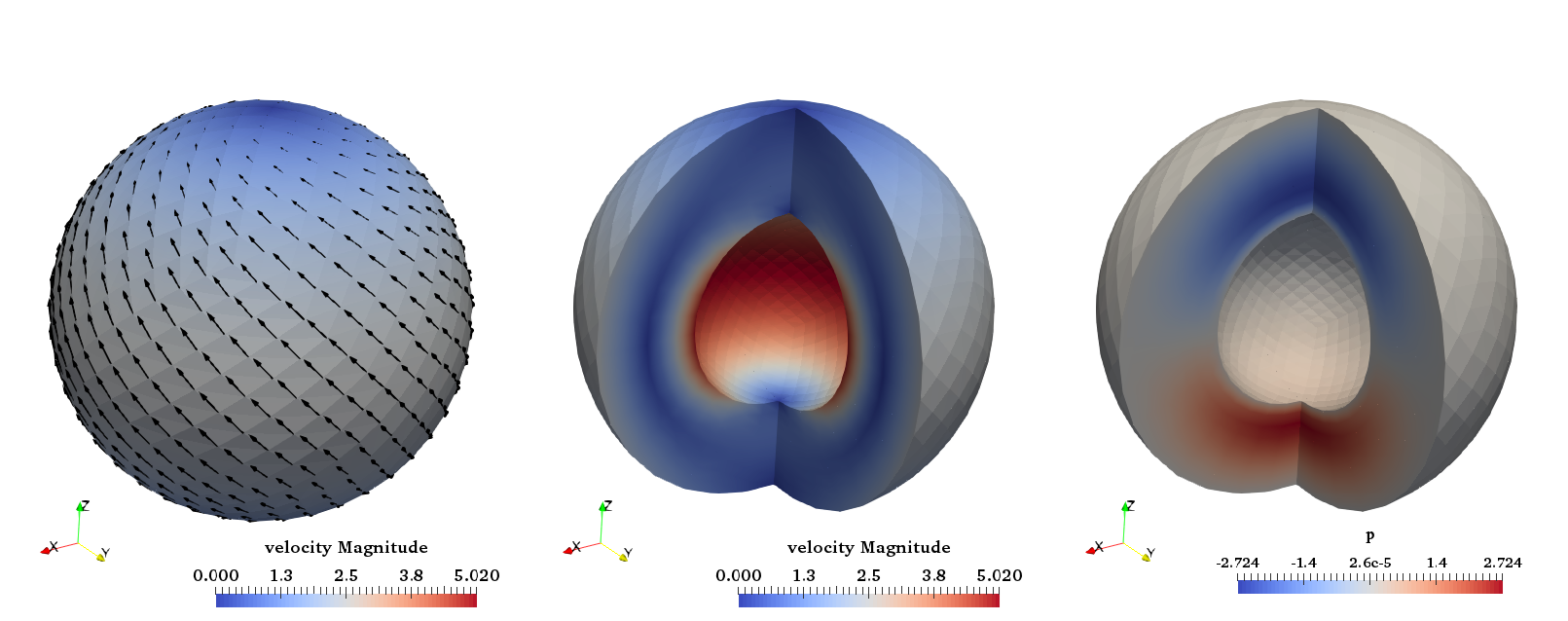The hollow sphere benchmark#
This benchmark is based on Thieulot [2017] in which an analytical solution to the isoviscous incompressible Stokes equations is derived in a spherical shell geometry. The velocity and pressure fields are as follows:
where
with
These two parameters are chosen so that \(v_r(R_1)=v_r(R_2)=0\), i.e. the velocity is tangential to both inner and outer surfaces. The gravity vector is radial and of unit length, while the density is given by:
We set \(R_1=0.5\), \(R_2=1\) and \(\gamma=-1\). The pressure is zero on both surfaces so that the surface pressure normalization is used. The boundary conditions that are used are simply the analytical velocity prescribed on both boundaries. The velocity and pressure fields are shown in Fig. 188.
Fig. 189 shows the velocity and pressure errors in the \(L_2\)-norm as a function of the mesh size \(h\) (taken in this case as the radial extent of the elements). As expected we recover a third-order convergence rate for the velocity and a second-order convergence rate for the pressure.

Fig. 188 Velocity and pressure fields for the hollow sphere benchmark.#
Fig. 189 Velocity and pressure errors in the \(L_2\)-norm as a function of the mesh size.#

